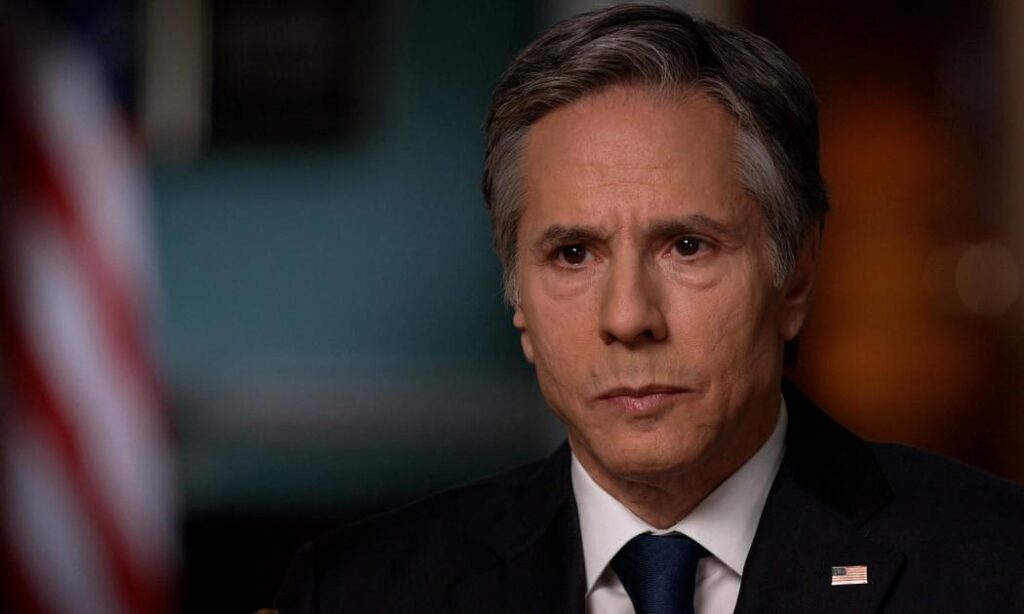The repairs on the underlying foundation of our reality universe are about all patched up. Actually, it’s like a map of “rail road tracks” that are embedded in a kind of sticky quantum clay that lies under the template forms.
The instigators were trying to hoe rows into the clay like substance so that the tracks would be followed in great grand circles of many sizes and shapes and configurations.
But the Oompaloomas are just smoothing and polishing away, and the behavior tracks are really smoothed out. Its a good thing. But it will take some time before the templates react to the changes.
In other words, things are good. No worries.
Herman’s Words Of Wisdom | The Munsters
Hillary Clinton Rushed by Ambulance to Emergency Room
3:59 PM EDT — Within the past hour, Hillary Clinton, wife of President Bill Clinton, was taken by ambulance from their home in Chappaqua, NY, to a nearby hospital emergency room.
Sources report that Hillary “was fine one minute, and in serious difficulty the next minute.” No other details about the sudden and debilitating situation were made available.
Fighting stuck in gray zone. Neocon escalation, tactical nukes
Have you ever bought something at a garage sale that turned out to be unexpectedly awesome?
I have indeed. I bought a non-running “fake” Rolex at an estate sale. The owner had died approx. a month prior and his kids (who clearly had no interest in being there – they were just trying to avoid a bill from a scrap disposal company) were selling off his possessions and personal effects. I asked about it. “It’s a fake, doesn’t work, two bucks”.
It wasn’t a fake – it was a 1972 Rolex Oyster Perpetual Date (Ref. 1500) with a sunburst grey dial. It simply needed a service and I had it back up and running again in under 4 hours – it kept great time, less than +/- 4 sec. a day. I did have to replace the acrylic crystal as it had a chipped edge, but I had spares in my stock. Being a small watch (34mm), it didn’t suit my wrist so I gave it to my nephew for his high school graduation gift. Should have heard his friends: “Dude, Ben’s uncle gave him a Rolex for graduation!”
These sell in similar condition for around $2500 – $3000 on the used market. Looks like this:

US Tech Giant Crushed in China, No More Arrogance After Micron’s Defeat!
https://youtu.be/DyVuJWOR6Uc
How DOES one fight China at all?
China has it all: Nukes, HUGE manufacturing capability, A huge Air force and Army and even IF one defeats China, it'll be a loss because if anything happens to China, the world economy will be practically dead. How do you fight China at all?
This is a very good question.
You are right. Fighting China is committing suicide. China is always 3 steps ahead of its adversaries and they cannot be hurt more than them.
Look at Donald Trump’s trade war with China. China wins hands down and the U.S. suffers till today. From 2017–2022 collectively China grew 26.5% while the U.S. grew 6.5%! The U.S. imports of Chinese goods actually grew higher than before the war.
Half a million Americans migrated into the the homeless category and up to 50 million people moved from middle class to the poor category. The life expectancy of China exceeded the U.S. for the very first time in 2021 and repeated the feat in 2022!
Trump would have still be president if not for this trade war. The poor who suffered higher prices resulting from the tariffs voted overwhelmingly against him. While China handled the Covid-19 effectively keeping deaths below 10K the U.S. lost more than a million lives. China opened up at perfectly the right moment when the virus strain has become docile and weak. The U.S. freedom of individualism is greater than collective good of the society hurt them terribly.
China is the biggest consumer by far. Chinese middle class alone is 700 million. And Chinese growth alone is 36.4 share of the world. US and G7 combined adds up to a mere 24.6%. China now represents 30% of world demand but what is more scary 30% of all things made for the world U.S. made in China. So when you fight with China you are cutting off at least 50% of sales opportunities world wide.
Chinese are ready for you if you dare try to attack China. It has a thousand surprises waiting for you. It has now the biggest army, it has more planes, ships and tanks. And it makes the most modern drones and they have 100 times more than the U.S. So crawl back to Beijing and talk politely like what Blinken is trying to do.
Don’t fight China. Work out a plan to be a good partner with China. China is not spoiling for a fight , US is, but China is absolutely ready. You destroy a 1000 homes in China they will destroy the same number of homes in the U.S. you kill a million Chinese they will kill a million Americans in the U.S.
The Beverly Hillbillies⚡️Granny Learns to Drive
https://youtu.be/hqNFFiw90x8
Southern Karo Syrup Chicken

Ingredients
- 1 broiler-fryer chicken
- 2 tablespoons butter
- 1/2 cup Karo corn syrup
- 1/2 cup orange juice
- 3 tablespoons lemon juice
Instructions
- Cut up chicken.
- In skillet over medium heat, cook chicken in butter about 30 minutes or until tender. Drain off fat.
- Mix remaining ingredients and pour over chicken. Cook over medium heat, turning often, for 5 to 10 minutes or until glazed.
WKRP Dr. Johnny Fever Awakens From The Dead
What do you think of the Chinese college entrance examination requiring memorization of 32 classical Chinese essays and 40 poems?
I was born and grew up in Taiwan. In my days, the standard education required that a student memorize more than the amount you mentioned before the time of college entrance exam. Looking back, I see this as both necessary and a blessing. Not unlike classics in other cultures, the Chinese classics is not something you peruse on an as-needed basis the way you consult Wikipedia, but something that has to be internalized and regurgitated in your subconsciousness hundreds of times over decades until it is integrated into your foundation. If you miss the opportunity of learning it by rote at a young age, you lose the chance of having it become a part of your personal makeup, and will at best have a casual and superficial connection to it. From the perspective of a culture, this would not be acceptable. I believe China is not unique in this.
This is especially true with poetry. We memorized a large amount of classic poetry, cream of the crop, early on. They sounded beautiful, but didn’t really speak to me for a long time. It would be much later, at unexpected instants when I ran into them again, and suddenly everything clicked, every word carried power I did not know existed. The experiences were so transformative that I clearly remember the exact settings in which they happened, where I was, what I was doing, who were around, etc. Such experiences would not have been possible if I had not rote-learned these poems a decade earlier as a youngster.
Having said that, as I have mentioned elsewhere on Quora, I must say that all these efforts to instill the Chinese classics into standard learning are a desperate attempt to save an endangered, if not extinct creature. The form of the traditional Chinese culture is preserved by doing this, but it is not clear if the essence, or the spirit, is still identifiable through such efforts. The traditional, self-contained and self-consistent Chinese system could be extremely efficient, creative, harmonious and powerful when it hummed like a well oiled machine. Our only, but indisputable, evidence of this are hundreds of powerful characters it was able to generate, capable of accomplishing impossible feats in the face of insurmountable challenge and adversity. But that self-contained and self-consistent system is no longer known to us. We no longer know how it looked or felt. The best we have now is the system of rote learning as documented in texts, which was far from the real thing.
But it is still much better than nothing at all. It could be worse.
Blind dates haven’t changed in 50 years
Beijing, Wellington to push for pragmatic cooperation
Beijing expressed its willingness to maintain high-level exchanges with Wellington and to enhance mutual trust and bilateral pragmatic cooperation as New Zealand Prime Minister Chris Hipkins announced on Monday that he would visit China at the end of June.
Chinese Foreign Ministry spokesman Wang Wenbin did not confirm the date of Hipkins’ visit, but told reporters to “stay tuned” for further information.
Hipkins said he would lead a major trade delegation to Beijing, Tianjin and Shanghai, which will be the first visit by a New Zealand prime minister to China since COVID-19.
Relations with China are among New Zealand’s “most significant, wide-ranging and complex” bilateral ties, The New Zealand Herald quoted Hipkins as saying. “We have a robust, ongoing dialogue with China,” he said.
Calling China and New Zealand “important cooperation partners”, Wang said he expects the two nations to achieve greater progress in bilateral relations and bring more benefit to the two peoples.
China is the largest trading partner, export market and source of imports for New Zealand. In 2022, bilateral trade volume in goods reached $25.15 billion, a year-on-year increase of 1.8 percent, according to the Foreign Ministry.
Journalist visas with India
In another development, the Foreign Ministry spokesman urged India to meet China halfway regarding arrangements for journalists.
“Media outlets are important bridges for mutual understanding and friendly relations. China stands ready to maintain communication with India under the principles of mutual respect, equality and mutual benefit. We hope India will work in the same direction with China,” Wang said.
Since 2020, India has refused to review and approve Chinese journalists’ visa applications, and limited the period of validity of visas held by Chinese journalists in India to only three months or even a month. Some Chinese journalists waited as long as three years for their visas, according to Wang.
As a result, the number of Chinese journalists stationed in India has plummeted from 14 to just one, he said.
The Indian side still has not agreed to renew the visa of the last Chinese journalist in the country. For Indian media outlets, four have been stationed in China in recent years and one is still working and living in China, Wang said.
“China has treated Indian journalists as friends and like family. We have communicated with the Indian side with restraint and goodwill. Regrettably, India has yet to take any action to address the problem,” he said.
The spokesman urged India to “scrap undue restrictions on Chinese journalists”, and effectively review and approve their visas as soon as possible, in order “to create conditions for resuming normal exchanges between Chinese and Indian media”.
MOMOLAND – BBOOM BBOOM
What does U.S. Secretary of State Antony Blinken think about Chinese diplomats’ negotiation skills?
Antony (the idiot) Blinkin?

Who the fuck cares what this train-wreck thinks? I mean, I could somehow give him some deference, but getting to be Secretary of States through butt-fucking isn’t high on my idea of achievement awards. The only thing that he brings to the table is an almost magical ability to fuck things up in spades. I mean when you spell disaster, you spell it B-L-I-N-K-I-N.
But, so much for his good points.
It’s common knowledge that he learned geography and Geo-politics by reading the instructions on the back of the free LGBQ+ condoms handed out to the homeless. And his opinions of others is difficult to gauge, as he doesn’t recognize that anyone else in the world exists. He’s me-me-me-me all the time, with no consideration of the thoughts, needs or feelings of others.
A perfect example of his exclusivity of penis wagging is his first meeting in Anchorage, Alaska with the Chinese diplomatic staff. His opening words were nothing short of acute diarrhea, vomited out with a speed of ill-mannered excess that astounded even the murders on death row have stayed in shock by.
It does not matter what this over-grown pustule of human feces thinks.
The Chinese diplomatic corps are giants compared tho this sniveling and breathing abomination. He is incapable of any form of communication. He only knows how to piss on the carpet and shit in his diaper. His ability to be butt-fucked may be legendary, but is useless on the grand scheme of things.
But I will say ONE good this about this festering, sniveling, pile of pestilence.
He hasn’t YET got the United States and China in a nuclear war. But, give him time. He’s one walking cluster-fuck if there ever was one.
Biden Is ‘In Denial’ Over Collapse Of Empire – Economist Richard Wolff
Southern Pan-Fried Chicken
A country ham (such as a “Smithfield” ham) is salt-cured, smoked and aged well. Whole country hams are expensive; it is possible, however, to buy country ham steaks. But you may also substitute thick-cut, smoked, streaky bacon for the ham in this recipe.

Ingredients
- 2 quarts cold water
- 1/2 cup kosher salt (regular table salt will make the brine too salty)
- 1 (3 pound) chicken, cut into 8 pieces
- 1 quart buttermilk
- 1 pound lard
- 1/2 cup (1 stick) unsalted butter
- 1/2 cup country ham pieces, or 1 thick slice country ham, cut into 1/2-inch strips (see note)
- 1 cup all-purpose flour
- 2 tablespoons cornstarch
- 1 teaspoon salt
- 1/2 teaspoon freshly ground black pepper
Instructions
- Combine the water and the salt, stirring until salt is dissolved.
- Place the chicken pieces in a bowl and pour the salt water over.
- Cover and refrigerate for 8-12 hours.
- Drain the chicken and rinse out the bowl it was brined in.
- Return the chicken to the bowl, pour the buttermilk over and cover and refrigerate 8-12 hours.
- Drain the chicken on a wire rack, discarding the buttermilk.
- Meanwhile, prepare the fat for frying: put the lard, butter and country ham into a heavy skillet or frying pan. Cook over low heat for 30-45 minutes, skimming as needed, until the butter ceases to throw off foam and the ham is browned.
- Use a slotted spoon to remove the ham carefully from the fat. (Reserve the fried ham for another use, such as snacking.)
- Just before frying, increase the temperature to medium-high and heat the fat to 335 degrees F.
- Blend together the flour, cornstarch, salt and pepper in a shallow bowl or on wax paper.
- Dredge the drained chicken pieces thoroughly in the flour mixture, then pat well to remove any excess flour.
- Slip some of the chicken pieces, skin-side-down, into the heated fat. Do not overcrowd the pan; fry in batches, if necessary. Cook for 8-10 minutes on each side, until the chicken is golden brown and cooked through.
- Drain thoroughly on a wire rack or on crumpled (not flat) paper towels. Serve hot, warm or at room temperature.
WKRP Venus’ 1st Day
Did Russia Destroy The Nova Kakhova Dam?
Propaganda will tell you that Russia detonated the Nova Kakhova Dam which was and is under its control. It thereby allegedly cut of Crimea from its major water supply and endangered the cooling of the six reactors of the Zaporizhzhia nuclear power plant. The island as well as the power plant are under firm Russian control.
Well, so you can believe that. Or you can look for some facts hidden behind such ‘news’.
Battles Rage as Ukraine Tries to Retake Russian-Occupied Territory – New York Times – June 9, 2023
Experts say the dam, which was held by Russian forces, was probably destroyed by an intentional explosion within the massive structure. They say an explosion from the outside, like a missile strike, or a structural failure caused by earlier war damage and high water spilling over the top, were conceivable causes but far less likely.
—
Ukraine Claims More Small Advances in Counteroffensive, but No Breakthroughs – New York Times – June 12, 2023
Engineering and munitions experts have said that the dam was probably breached by an explosion from the inside, not by shelling or other external attacks, and not by a structural failure.
—
Britain has delivered long-range ‘Storm Shadow’ cruise missiles to Ukraine ahead of expected counteroffensive, sources say – CNN – May 12, 2023
The United Kingdom has delivered multiple “Storm Shadow” cruise missiles to Ukraine, giving the nation a new long-range strike capability in advance of a highly anticipated counteroffensive against Russian forces, multiple senior Western officials told CNN.
—
Storm Shadow – Wikipedia
The Storm Shadow’s BROACH warhead features an initial penetrating charge to clear soil or enter a bunker, then a variable delay fuze to control detonation of the main warhead. Intended targets are command, control and communications centres; airfields; ports and power stations; ammunition management and storage facilities; surface ships and submarines in port; bridges and other high value strategic targets.
“Two stage warhead punctures external shell, then detonates inside target”

—
Storm Shadown – Federation of American Scientists
When engaging hard targets, such as Hardened Aircraft Shelters or bunkers, the missile will strike the target at the estimated optimum dive angle, selected during mission planning. On impact the detonation sequence commences. The precursor charge will perforate the target structure, and any soil covering, and the follow through penetrator warhead will continue to penetrate inside the target to be detonated after a preselectable fuse delay.
Posted by b at 5:30 UTC | Comments (12)
“This is the 2nd phase of UFO disclosure” – Dr. Michael Salla confirms UFO whistleblower story
Complex Systems Won’t Survive the Competence Crisis
At a casual glance, the recent cascades of American disasters might seem unrelated. In a span of fewer than six months in 2017, three U.S. Naval warships experienced three separate collisions resulting in 17 deaths. A year later, powerlines owned by PG&E started a wildfire that killed 85 people. The pipeline carrying almost half of the East Coast’s gasoline shut down due to a ransomware attack. Almost half a million intermodal containers sat on cargo ships unable to dock at Los Angeles ports. A train carrying thousands of tons of hazardous and flammable chemicals derailed near East Palestine, Ohio. Air Traffic Control cleared a FedEx plane to land on a runway occupied by a Southwest plane preparing to take off. Eye drops contaminated with antibiotic-resistant bacteria killed four and blinded fourteen.
While disasters like these are often front-page news, the broader connection between the disasters barely elicits any mention. America must be understood as a system of interwoven systems; the healthcare system sends a bill to a patient using the postal system, and that patient uses the mobile phone system to pay the bill with a credit card issued by the banking system. All these systems must be assumed to work for anyone to make even simple decisions. But the failure of one system has cascading consequences for all of the adjacent systems. As a consequence of escalating rates of failure, America’s complex systems are slowly collapsing.
The core issue is that changing political mores have established the systematic promotion of the unqualified and sidelining of the competent. This has continually weakened our society’s ability to manage modern systems. At its inception, it represented a break from the trend of the 1920s to the 1960s, when the direct meritocratic evaluation of competence became the norm across vast swaths of American society.
In the first decades of the twentieth century, the idea that individuals should be systematically evaluated and selected based on their ability rather than wealth, class, or political connections, led to significant changes in selection techniques at all levels of American society. The Scholastic Aptitude Test (SAT) revolutionized college admissions by allowing elite universities to find and recruit talented students from beyond the boarding schools of New England. Following the adoption of the SAT, aptitude tests such as Wonderlic (1936), Graduate Record Examination (1936), Army General Classification Test (1941), and Law School Admission Test (1948) swept the United States. Spurred on by the demands of two world wars, this system of institutional management electrified the Tennessee Valley, created the first atom bomb, invented the transistor, and put a man on the moon.
By the 1960s, the systematic selection for competence came into direct conflict with the political imperatives of the civil rights movement. During the period from 1961 to 1972, a series of Supreme Court rulings, executive orders, and laws—most critically, the Civil Rights Act of 1964—put meritocracy and the new political imperative of protected-group diversity on a collision course. Administrative law judges have accepted statistically observable disparities in outcomes between groups as prima facie evidence of illegal discrimination. The result has been clear: any time meritocracy and diversity come into direct conflict, diversity must take priority.
The resulting norms have steadily eroded institutional competency, causing America’s complex systems to fail with increasing regularity. In the language of a systems theorist, by decreasing the competency of the actors within the system, formerly stable systems have begun to experience normal accidents at a rate that is faster than the system can adapt. The prognosis is harsh but clear: either selection for competence will return or America will experience devolution to more primitive forms of civilization and loss of geopolitical power.
From Meritocracy to Diversity
The first domino to fall as Civil Rights-era policies took effect was the quantitative evaluation of competency by employers using straightforward cognitive batteries. While some tests are still legally used in hiring today, several high-profile enforcement actions against employers caused a wholesale change in the tools customarily usable by employers to screen for ability.
After the early 1970s, employers responded by shifting from directly testing for ability to using the next best thing: a degree from a highly-selective university. By pushing the selection challenge to the college admissions offices, selective employers did two things: they reduced their risk of lawsuits and they turned the U.S. college application process into a high-stakes war of all against all. Admission to Harvard would be a golden ticket to join the professional managerial class, while mere admission to a state school could mean a struggle to remain in the middle class.
This outsourcing did not stave off the ideological change for long. Within the system of political imperatives now dominant in all major U.S. organizations, diversity must be prioritized even if there is a price in competency. The definition of diversity varies by industry and geography. In elite universities, diversity means black, indigenous, or Hispanic. In California, Indian women are diverse but Indian men are not. When selecting corporate board members, diversity means “anyone who is not a straight white man.” The legally protected and politically enforced nature of this imperative renders an open dialogue nearly impossible.
However diversity itself is defined, most policy on the matter is based on a simple premise: since all groups are identical in talent, any unbiased process must produce the same group proportions as the general population, and therefore, processes that produce disproportionate outcomes must be biased. Prestigious journals like Harvard Business Review are the first to summarize and parrot these views, which then flow down to reporting by mass media organizations like Bloomberg Businessweek. Soon, it joins McKinsey’s “best practices” list and becomes instantiated in corporate policies.
Unlike accounting policies, which emanate from the Financial Accounting Standards Board and are then implemented by Chief Financial Officers, the diversity push emanates inside of organizations from multiple power centers, each of which joins in for independent reasons. CEOs push diversity policies primarily to please board members and increase their status. Human Resources (HR) professionals push diversity policies primarily to avoid anti-discrimination lawsuits. Business development teams push diversity to win additional business from diversity-sensitive clients (e.g. government agencies). Employee Resource Groups (ERGs), such as the Black Googler Network, push diversity to help their in-group in hiring and promotion decisions.
Diversity in Theory and Practice
In police academies around the country, new recruits are taught to apply an escalation of force algorithm with non-compliant subjects: “Ask, Tell, Make.” The idea behind “Ask, Tell, Make” is to apply the least amount of force necessary to achieve the desired level of compliance. This is the means by which police power, which is ultimately backed by significant coercive force, can maintain an appearance of voluntary compliance and soft-handedness. Similarly, the power centers inside U.S. institutions apply a variant of “Ask, Tell, Make” to achieve diversity in their respective organizations.
The first tactics for implementing diversity imperatives are the “Ask” tactics. These simply ask all the members of the organization to end bias. At this stage, the policies seem so reasonable and fair that there will rarely be much pushback. Best practices such as slating guidelines are a common tool at this stage. Slating guidelines require that every hiring process must include a certain number and type of diverse candidates for every job opening. Structured interviews are another best practice that requires interviewers to stick with a script to minimize the chance of uncovering commonalities between the interviewer and interviewee that might introduce bias. Often HR will become involved in the hiring process, specifically asking the hiring manager to defend their choice not to hire a diverse candidate. Because the wrong answer could result in shaming, loss of advancement opportunities, or even termination, the hiring manager can often be persuaded to prioritize diversity over competence.
Within specialized professional services companies, senior-level recruiting will occasionally result in a resume collection where not a single diverse candidate meets the minimum specifications of the job. This is a terrible outcome for the hiring manager as it attracts negative attention from HR. At this point, firms will often retain an executive search agency that focuses on exclusively diverse candidates. When that does not result in sufficient diversity, roles will often have their requirements diluted to increase the pool of diverse candidates.
For example, within hedge funds, the ideal entry-level candidate might be an experienced former investment banker who went to a top MBA program. This preferred pedigree sets a minimum bar for both competence and work ethic. This first-pass filter enormously winnows the field of underrepresented candidates. To relax requirements for diversity’s sake, this will be diluted in various ways. First, the work experience might be stripped. Next, the role gets offered to MBA interns. Finally, fresh undergraduates are hired into the analyst role. Dilution works not just because of the larger field of candidates it allows for but also because the Harvard Admission Office of 2019 is even more focused on certain kinds of diversity than the Harvard Admission Office of 2011 was.
This dilution is not costless; fewer data points result in a wider range of outcomes and increase the risk of a bad hire. All bad hires are costly but bad hires that are diverse are even worse. The risk of a wrongful termination lawsuit either draws out the termination process for diverse hires or results in the firm adjusting by giving them harmless busy work until they leave of their own volition—either way, a terrible outcome for the organizations which hired them.
If these “Ask” tactics do not achieve enough diversity, the next step in the escalation is to attach carrots and sticks to directly tell decision-makers to increase the diversity of the organization. This is the point at which the goals of diversity and competence truly begin displaying significant tension between each other. The first step is the implementation of Key Performance Indicators (KPI) linked to diversity for all managers. Diversity KPIs are a tool to embarrass leaders and teams that are not meeting their diversity targets. Given that most organizations are hierarchical and pyramidal, combined with the fact that America was much whiter 50 years ago than it was today, it is unsurprising that senior leadership teams are less diverse than America as a whole—and, more pertinently, than their own junior teams.
The combination of a pyramid-shaped org chart and a senior leadership team where white men often make up 80 percent or more of the team means that the imposition of an aggressive KPI sends a message to the layer below them: no white man in middle management will likely ever see a promotion as long as they remain in the organization. This is never expressed verbally. Rather, those overlooked figure it out as they are passed over continually for less competent but more diverse colleagues. The result is demoralization, disengagement, and over time, departure.
While all the aforementioned techniques fall into the broad category of affirmative action, they primarily result in slightly tilting the scale toward diverse candidates. The next step is simply holding different groups to different standards. Within academia, the recently filed Students for Fair Admissions v. President and Fellows of Harvard College lawsuit leveraged data to show the extent to which Harvard penalizes Asian and white applicants to help black and Hispanic applicants. The UC System, despite formally being forbidden from practicing affirmative action by Proposition 209, uses a tool called “comprehensive admission” to accomplish the same goal.
The latest technique, which was recently brought to light, shows UC admissions offices using the applicants’ high schools as a proxy for race to achieve their desired goal. Heavily Asian high schools such as Arcadia—which is 68 percent Asian—saw their UC-San Diego acceptance rate cut from 37 percent to 13 percent while the 99-percent-Hispanic Garfield High School saw its UC-San Diego acceptance rate rise from 29 percent to 65 percent.
The preference for diversity at the college faculty level is similarly strong. Jessica Nordell’s End of Bias: A Beginning heralded MIT’s efforts to increase the gender diversity of its engineering department: “When applications came in, the Dean of Engineering personally reviewed every one from a woman. If departments turned down a good candidate, they had to explain why.”
When this was not enough, MIT increased its gender diversity by simply offering jobs to previously rejected female candidates. While no university will admit to letting standards slip for the sake of diversity, no one has offered a serious argument why the new processes produce higher or even equivalent quality faculty as opposed to simply more diverse faculty. The extreme preference for diversity in academia today explains much of the phenomenon of professors identifying with a minor fraction of their ancestry or even making it up entirely.
During COVID-19, the difficulty of in-person testing and online proctoring created a new mechanism to push diversity at the expense of competency: the gradual but systematic elimination of standardized tests as a barrier to admission to universities and graduate schools. Today, the majority of U.S. colleges have either stopped requiring SAT/ACT scores, no longer require them for students in the top 10 percent of their class, or will no longer consider them. Several elite law schools, including Harvard Law School, no longer require the LSAT as of 2023. With thousands of unqualified law students headed to a bar exam that they are unlikely to pass, the National Conference of Bar Examiners is already planning to dilute the bar exam under the “NextGen” plan. Specifically, “eliminat[ing] any aspects of our exams that could contribute to performance disparities” will almost definitionally reduce the degree to which the exam tests for competency.
Similarly, standards used to select doctors have also been weakened to promote diversity. Programs such as the City College of New York’s BS/MD program have eliminated the MCAT requirement. With the SAT now optional, new candidates can go straight from high school to the United States Medical Licensing Examination Step 1 exam in medical school without having gone through any rigorous standardized test whose score can be compared across schools. Step 1 scores were historically the most significant factor in the National Residency Matching Program, which pairs soon-to-be doctors with their future residency training programs. Because Step 1 scores serve as a barrier to increasing diversity, they have been made pass/fail. A handful of doctors are speaking out about the dangers of picking doctors based on factors other than competency but most either explicitly prefer diversity or else stay silent, concerned about the career-ending repercussions of pointing out the obvious.
When even carrot and stick incentives and the removal of standards do not achieve enough diversity, the end game is to simply make decision-makers comply. “Make” has two preferred implementations: one is widely discussed and the other is, for obvious reasons, never disclosed publicly. The first method of implementation is the application of quotas. Quotas or set-asides require the reservation of admissions slots, jobs, contracts, board seats, or other scarce goods for women and members of favored minority groups. Government contracts and supplier agreements are explicitly awarded to firms that have acronyms such as SB, WBE, MBE, DBE, SDB, VOSB, SDVOSB, WOSB, HUB, and 8(a).
Within large employers and government contractors, quotas are used for both hiring and promotions, requiring specific percentages of hiring or promotions to be reserved for favored groups. During the summer of 2020, the CEO of Wells Fargo, was publicly shamed after his memo blaming the underrepresentation of black senior leaders on a “very limited pool” of black talent was leaked to Reuters. Less than a month later, the bank publicly pledged to reserve 12 percent of leadership positions for black candidates and began tying executive compensation to reaching diversity goals. In 2022, Goldman Sachs extended quotas to the capital markets by adopting a policy to avoid underwriting IPOs of firms without at least two board members that are not straight white men.
When diversity still refuses to rise to acceptable levels, the remaining solution is the direct exclusion of non-diverse candidates. While public support for anti-discrimination laws and equal opportunity laws is high, public support for affirmative action and quotas is decidedly mixed. Hardline views such as those expressed in author Ijeoma Oluo’s Mediocre: The Dangerous Legacy of White Male America—namely that “any white man in a position of power perpetuates a system of white male domination”—are still considered extreme, even within U.S. progressive circles.
As such, when explicit exclusion is used to eliminate groups like white men from selection processes, it is done subtly. Managers are told to sequester all the resumes from “non-diverse” candidates—that is, white males. These resumes are discarded and the candidates are sent emails politely telling them that “other candidates were a better fit.” While some so-called “reverse discrimination” lawsuits have been filed, most of these policies go unreported. The reasons are straightforward; even in 2023, screening out all white men is not de jure legal. Moreover, any member of the professional managerial class who witnesses and reports discrimination against white men will never work in their field again.
Even anonymous whistleblowing is likely to be rare. To imagine why, suppose incontrovertible evidence was produced that one’s employer was explicitly excluding white male candidates, and a lawsuit was filed. The employer’s reputation and the reputation of all the employees there, including the white men still working there, would be tarnished. That said, we can expect to see more lawsuits from men who feel they have little to lose.
This “Ask, Tell, Make” framework, under various descriptions, is the method by which individuals with a vested interest in more diversity push their organizations toward their preferred outcome. Force begins requesting modest changes to recruiting to make it “more fair.” Force ends with the heavy-handed application of quotas and even exclusion. The American system is not a monolith, however, which means that the strength of the push and its effects on competency is not distributed evenly.
Competency Is Declining From the Core Outwards
Think of the American system as a series of concentric rings with the government at the center. Directly surrounding that are the organizations that receive government funds, then the nonprofits that influence and are subject to policy, and finally business at the periphery. Since the era of the Manhattan Project and the Space Race, the state capacity of the federal government has been declining almost monotonically.
While this has occurred for a multitude of reasons, the steel girders supporting the competency of the federal government were the first to be exposed to the saltwater of the Civil Rights Act and related executive orders. Government agencies, which are in charge of overseeing all the other systems, have seen the quality of their human capital decline tremendously since the 1960s. While the damage to an agency like the Department of Agriculture may have long-term deadly consequences, the most immediate danger is at safety-critical agencies like the Federal Aviation Administration (FAA).
The Air Traffic Control (ATC) system used in the U.S. relies on an intricate dance of visual or radar observation, transponders, and radio communication, all with the incredible challenge of keeping thousands of simultaneously moving planes from ever crashing into each other. Since air controlling is one of the only jobs that pays more than $100,000 per year and does not require a college diploma, it has been a popular career choice for individuals without a degree who nonetheless have an exceptionally good memory, attention span, visuospatial awareness, and logical skills. The Air Traffic Selection and Training (AT-SAT) Exam, a standardized test of those critical skills, was historically the primary barrier to entry for air controllers. As a consequence of the AT-SAT, as well as a preference for veterans with former air controller experience, 83 percent of air controllers in the U.S. were white men as of 2014.
That year, the FAA added a Biographical Questionnaire (BQ) to the screening process to tilt the applicant pool toward diverse candidates. Facing pushback in the courts from well-qualified candidates who were screened out, the FAA quietly backed away from the BQ and adopted a new exam, the Air Traffic Skills Assessment (ATSA). While the ATSA includes some questions similar to those of the BQ, it restored the test’s focus on core air traffic skills. The importance of highly-skilled air controllers was made clear in the most deadly air disaster in history, the 1977 Tenerife incident. Two planes, one taking off and one taxiing, collided on the runway due to confusion between the captain of KLM 4805 and the Tenerife ATC. The crash, which killed 583 people, resulted in sweeping changes in aviation safety culture.
Recently, the tremendous U.S. record for air safety established since the 1970s has been fraying at the edges. The first three months of 2023 saw nine near-miss incidents at U.S. airports, one with two planes coming within 100 feet of colliding. This terrifying uptick from years prior resulted in the FAA and NTSB convening safety summits in March and May, respectively. Whether they dared to discuss root causes seems unlikely.
Given the sheer size of the U.S. military in both manpower and budget dollars, it should not come as a surprise that the diversity push has also affected the readiness of this institution. Following three completely avoidable collisions of U.S. Navy warships in 2017 and a fire in 2020 that resulted in the scuttling of USS Bonhomme Richard, a $750 million amphibious assault craft, two retired marines conducted off-the-record interviews with 77 current and retired Navy officers. One recurring theme was the prioritization of diversity training over ship handling and warfighting preparedness. Many of them openly admit that, given current issues, the U.S. would likely lose an open naval engagement with China. Instead of taking the criticism to heart, the Navy commissioned “Task Force One Navy,” which recommended deemphasizing or eliminating meritocratic tests like the Officer Aptitude Rating to boost diversity. Absent an existential challenge, U.S. military preparedness is likely to continue to degrade.
The decline in the capacity of government contractors is likewise obvious, with the largest contractors being the most directly impacted. The five largest contractors—Lockheed Martin, Boeing, General Dynamics, Raytheon Company, and Northrop Grumman—will all struggle to maintain competency in the coming years.
Boeing, one of only two firms globally capable of mass-producing large airliners, has a particularly striking crisis unfolding in its institutional culture. Shortly after releasing the 737 MAX, 346 people died in two nearly identical 737 MAX crashes in Indonesia and Ethiopia. The cause of the crashes was a complex interaction between design choices, cost-cutting led by MBAs, FAA issues, the MCAS flight-control system, a faulty sensor, and pilot training. Meanwhile, on the defense side of the business, Boeing’s new fuel tanker, the KC-46A Pegasus is years behind on deliveries due to serious technical flaws with the fueling system along with multiple cases of Foreign Object Debris left inside the plane during construction: tools, a red plastic cap, and in one case, even trash. Between the issues at ATC and Boeing, damage to the U.S.’s phenomenal aviation safety record seems almost inevitable.
After government contractors, the next-most-affected class of institutions are nonprofit organizations. They are entrapped by the government whose policies they are subject to and trying to influence, the opinions of their donor base, and lack of any profit motive. The lifeblood of nonprofits is access to capital, either directly in the form of government grants or through donations that are deemed tax-deductible. Accessing federal monies means being subject to the full weight of U.S. diversity rules and regulations. Nonprofits are generally governed by boards whose members tend to overlap with the list of major donors. Because advocacy for diversity and board memberships are both high-status positions, unsurprisingly board members tend to voice favorable opinions of diversity, and those opinions flow downstream to the organizations they oversee.
Nonprofits—including universities, charities, and foundations—exist in an overlapping ecosystem with journalism, with individuals tending to freely circulate between the four. The activities of nonprofits are bound up in the same discourses shaped by current news and academic research, with all four reflecting the same general ideological consensus. Finally, lacking the profit motive, the decision-making processes of nonprofits are influenced by what will affect the status of the individuals within those organizations rather than what will affect profits. Within nonprofits, the cost of incompetent staffers is borne by “stakeholders,” rather than any one individual.
While all businesses subject to federal law must prioritize diversity over competency at some level, the problem is worse at publicly-traded corporations for reasons both obvious and subtle. The obvious reason is that larger companies present larger targets for EEOC actions and discrimination lawsuits with hundreds of millions of dollars at stake. Corporations have logically responded by hiring large teams of HR professionals to preempt such lawsuits. Over the past several decades, HR has evolved from simply overseeing onboarding to involvement in every aspect of hiring, promotions, and firings, seeing them all through a political and regulatory lens.
The more subtle reason for pressure within publicly-traded companies is that they require ongoing relationships with a spiderweb of banks, credit ratings agencies, proxy advisory services, and most importantly, investors. Given that the loss of access to capital is an immediate death sentence for most businesses, the CEOs of publicly-traded companies tend to push diversity over competency even when the decline in firm performance is clear. CEOs would likely rather trade a small drag on profits margins than a potentially career-ending scandal from pushing back.
Whereas publicly-traded corporations nearly uniformly push diversity, privately-held businesses vary tremendously based on the views of their owners. Partnerships such as the Big Four accounting firms and top-tier management consultancies are high-status. High-status firms must regularly proclaim extensive support for diversity. While the firms tend to be highly selective, partnerships whose leadership is overwhelmingly white and male have generally capitulated to the zeitgeist and are cutting standards to hit targets. Firms often manage around this by hiring for diversity and then putting diversity hires into roles where they are the least likely to damage the firm or the brand. Somewhat counterintuitively, firms with diverse founders are often highly meritocratic, as the structure harnesses the founder’s desire to make money and shields them from criticism on diversity issues.
The most notable example of a diverse meritocracy is Vista Equity Partners, the large private equity firm founded by Robert F. Smith, America’s wealthiest black man. Robert F. Smith is one of the most vocal advocates for and philanthropists to historically black U.S. colleges and universities. It would be reasonable to expect Vista to prioritize diversity over competency in its portfolio companies. However, Vista has instead been profiled for giving all portfolio company management teams the Criteria Cognitive Aptitude Test and ruthlessly culling low-performers. Given the amount of value to be created by promoting the best people into leadership roles of their portfolio companies, one might imagine this to be low-hanging fruit for the rest of private equity, yet Vista is an outlier. Why Vista can apply the CCAT without a public outcry is obvious.
The other firms that tend to still focus on competency are those that are small and private. Such firms have two key advantages: they fall below the fifteen-employee threshold for the most onerous EEOC rules and the owner can usually directly observe the performance of everyone inside the organization. Within small firms, underperformance is usually obvious. Tech startups, being both small and private, would seem to have the right structure to prioritize competency.
The American System Is Cracking
Promoting diversity over competency does not simply affect new hires and promotion decisions. It also affects the people already working inside of America’s systems. Morale and competency inside U.S. organizations are declining. Those who understand that the new system makes it hard or impossible for them to advance are demoralized, affecting their performance. Even individuals poised to benefit from diversity preferences notice that better people are being passed over and the average quality of their team is declining. High performers want to be on a high-performing team. When the priorities of their organizations shift away from performance, high performers respond negatively.
This effect was likely seen in a recent paper by McDonald, Keeves, and Westphal. The paper points out that white male senior leaders reduce their engagement following the appointment of a minority CEO. While it is possible that author Ijeoma Oluo is correct, and that white men have so much unconscious bias raging inside of them that the appointment of a diverse CEO sends them into a tailspin of resentment, there is another more plausible explanation. When boards choose diverse CEOs to make a political statement, high performers who see an organization shifting away from valuing honest performance respond by disengaging.
Some demoralized employees—like James Damore in his now-famous essay, “Google’s Ideological Echo Chamber”—will directly push back against pro-diversity arguments. Like James, they will be fired. Older, demoralized workers, especially those who are mere years from retirement, are unlikely to point out the decline in competency and risk it costing them their jobs. Those who have a large enough nest egg may simply retire to avoid having to deal with the indignity of having to attend another Inclusive Leadership seminar.
As older men with tacit knowledge either retire or are pushed out, the burden of maintaining America’s complex systems will fall on the young. Lower-performing young men angry at the toxic mix of affirmative action (hurting their chances of admission to a “good school”) and credentialism (limiting the “good jobs” to graduates of “good schools”) are turning their backs on college and white-collar work altogether.
This is the continuation of a trend that began over a decade ago. High-performing young men will either collaborate, coast, or downshift by leaving high-status employment altogether. Collaborators will embrace “allyship” to attempt to bolster their chances of getting promoted. Coasters realize that they need to work just slightly harder than the worst individual on their team. Their shirking is likely to go unnoticed and they are unlikely to feel enough emotional connection to the organization to raise alarm when critical mistakes are being made. The combination of new employees hired for diversity, not competence, and the declining engagement of the highly competent sets the stage for failures of increasing frequency and magnitude.
The modern U.S. is a system of systems interacting together in intricate ways. All these complex systems are simply assumed to work. In February of 2021, cold weather in Texas caused shutdowns at unwinterized natural gas power plants. The failure rippled through the systems with interlocking dependencies. As a result, 246 people died. In straightforward work, declining competency means that things happen more slowly, and products are lower quality or more expensive. In complex systems, declining competency results in catastrophic failures.
To understand why, one must understand the concept of a “normal accident.” In 1984, Charles Perrow, a Yale sociologist, published the book, Normal Accidents: Living With High-Risk Technologies. In this book, Perrow lays out the theory of normal accidents: when you have systems that are both complex and tightly coupled, catastrophic failures are unavoidable and cannot simply be designed around. In this context, a complex system is one that has many components that all need to interact in a specified way to produce the desired outcome. Complex systems often have relationships that are nonlinear and contain feedback loops. Tightly-coupled systems are those whose components need to move together precisely or in a precise sequence.
The 1979 Three Mile Island Accident was used as a case study: a relatively minor blockage of a water filter led to a cascading series of malfunctions that culminated in a partial meltdown. In A Demon of Our Own Design, author Richard Bookstaber added two key contributions to Perrow’s theory: first, that it applies to financial markets, and second, that regulation intended to fix the problem may make it worse.
The biggest shortcoming of the theory is that it takes competency as a given. The idea that competent organizations can devolve to a level where the risk of normal accidents becomes unacceptably high is barely addressed. In other words, rather than being taken as absolutes, complexity and tightness should be understood to be relative to the functionality of the people and systems that are managing them. The U.S. has embraced a novel question: what happens when the men who built the complex systems our society relies on cease contributing and are replaced by people who were chosen for reasons other than competency?
The answer is clear: catastrophic normal accidents will happen with increasing regularity. While each failure is officially seen as a separate issue to be fixed with small patches, the reality is that the whole system is seeing failures at an accelerating rate, which will lead in turn to the failure of other systems. In the case of the Camp Fire that killed 85 people, PG&E fired its CEO, filed Chapter 11, and restructured. The system’s response has been to turn off the electricity and raise wildfire insurance premiums. This has resulted in very little reflection. The more recent coronavirus pandemic was another teachable moment. What started just three years ago with a novel respiratory virus has caused a financial crisis, a bubble, soaring inflation, and now a banking crisis in rapid succession.
Patching the specific failure mode is simultaneously too slow and induces unexpected consequences. Cascading failures overwhelm the capabilities of the system to react. 20 years ago, a software bug caused a poorly-managed local outage that led to a blackout that knocked out power to 55 million people and caused 100 deaths. Utilities were able to restore power to all 55 million people in only four days. It is unclear if they could do the same today. U.S. cities would look very different if they remained without power for even two weeks, especially if other obstructions unfolded. What if emergency supplies sat on trains immobilized by fuel shortages due to the aforementioned pipeline shutdown? The preference for diversity over competency has made our system of systems dangerously fragile.
Americans living today are the inheritors of systems that created the highest standard of living in human history. Rather than protecting the competency that made those systems possible, the modern preference for diversity has attenuated meritocratic evaluation at all levels of American society. Given the damage already done to competence and morale combined with the natural exodus of baby boomers with decades worth of tacit knowledge, the biggest challenge of the coming decades might simply be maintaining the systems we have today.
The path of least resistance will be the devolution of complex systems and the reduction in the quality of life that entails. For the typical resident in a second-tier city in Mexico, Brazil, or South Africa, power outages are not uncommon, tap water is probably not safe to drink, and hospital-associated infections are common and often fatal. Absent a step change in the quality of American governance and a renewed culture of excellence, they prefigure the country’s future.
Grandpa’s… Wife?! | The Munsters
UPDATED AGAIN 5:30 PM EDT — TODAY! NATO “AIR-DEFENDER 2023” EXERCISE BEGINS . . .
The largest air force deployment exercise in NATO history, Air Defender 23, kicks off today. Many people fear this “exercise” is actually a “cover” for NATO to directly involve itself in the Russia-Ukraine conflict, and thereby commence World War 3, which would go nuclear.
From 12 to 23 June, 10,000 participants from 25 countries will train on 250 aircraft, including 190 combat aircraft, in European airspace.
Wunstorf Air Base in Germany is the centerpiece of the exercise, home to a purpose-built field tank farm.

The warehouse is the largest in Germany and holds about 2.4 million liters of kerosene. We are not hinting at anything.
On Saturday, about 300 people protested in front of the air base against NATO exercises. The protesters demanded diplomatic solutions instead of the use of weapons and called for an end to the conflict in Ukraine.
Hal Turner Editorial Opinion
Everyone is waiting for the other shoe to drop with the Russia-Ukraine Conflict which NATO uses as an excuse to involve itself directly. God knows NATO has done everything it knows how, to get Russia to attack them: NATO has provided Ukraine with guns, ammunition, artillery, shells, missiles, HIMARS MLRS, Intelligence, Surveillance, Reconaissance and even targeting info on how and where to hit Russian troops. Countless BILLIONS in cash money has poured into Ukraine from NATO countries, to kill Russians.
That Russia has not taken this bait is amazing. The patience and self-discipline of the Russians and their leaders is mind-boggling. Yet, God bless them, the Russians have stayed the course.
In World War 2, Russia fought Nazi Germany. At the time, Russia was part of the then-Soviet Union, but it was Russia that lost the most in that war: 27 MILLION Russians were killed fighting NAZIS.
Fast-Forward to 2014, what pops-up in Ukraine? A NAZI infested government, installed by the West, after the West fomented, incited, and financed riots that toppled the government of President Viktor Yanukovich.
After overthrowing the Ukraine government, the West goaded Ukraine to start attacking the Russian-speaking populations of Luhansk and Donetsk. Those two provinces wanted to join Crimea and secede from Ukraine after it’s government was overthrown by the West. The new puppet government of Ukraine refused to allow those two provinces to secede, and instead, sent troops to begin attacking the Russian-speaking civilians there.
Russia covertly intervened with troops to help defend Luhansk and Donetsk. The two provinces, with Russian help, fought Ukraine to a standstill.
So the West got sneaky. A peace conference was called to meet in Minsk, Belarus. Ukraine, Luhansk, Donetsk, France, Germany, and Russia, attended. A peace agreement was signed . . . and Ukraine did not abide ANY of it for years after.
Turned out, the West overtly LIED during the Minsk Peace Talks. It came out later, that then-German-Chancellor Angela Merkel, and then-President of France, Francois Hollande, signed the Minsk Agreements knowing it was a ruse; they told the press in 2022, they just wanted to buy time to arm Ukraine!
So all the way back in the year 2014, it was the West’s intent to start a war between Ukraine and Russia!
For eight years, from 2014-2022, the West armed and trained Ukraine to NATO Standards. Ukraine had a standing army of 800,000; the largest in Europe.
In December, 2021, Ukraine massed more troops, tanks, artillery, fighter jets and the like, on the borders of Luhansk and Donetsk. The earlier years from 2014-2022 where Ukraine killed upwards of 13,000 civilians in Luhansk and Donetsk apparently wasn’t good enough; Ukraine was going to slaughter the people there.
Russia said “no” and stepped-in on February 24, 2022.
The West went nuts, claiming this was “an unprovoked aggression by Russia.” It wasn’t. It was provoked over, and over, and over again, by the West.
In the almost 16 months since the conflict began, NATO has done anything and everything it can to help Ukraine kill Russians. NATO failed. Ukraine is getting smashed on the battle field despite all of NATO’s help. Ukraine is losing the conflict – badly.
It is so bad for Ukraine that they have to draft 16 year old boys off the streets, at gunpoint – to force them to the front to fight. The bloodbath is horrifying, but NATO will not stop pushing Ukraine to fight further.
Yet for all its pushing of Ukraine to fight-on, and for all the equipment NATO has supplied to Ukraine . . . Russia is still winning. Russia just smashes all the gear being sent by NATO. Within the past 48 hours, look at what Russia did to NATO’s “advanced” weaponry:

Three out of the six Leopard 2R mine-clearing vehicles Finland donated to Ukraine have been lost in the same field.
With other engineering vehicles in the field as well, this is a massive loss for the brigade, no matter what.
Russia just moves right along, smashing and destroying everything NATO sends.
As you read this story on June 12, 2023, Ukraine’s only hope is for NATO to enter the war and fight Russia directly. But Russia has not attacked NATO. So at this point, an “incident” has to take place so as to justify NATO’s entry into the conflict. And THAT is what this “Air Defender, 2023” exercise is likely all about.
Someone is likely to create an “incident” which NATO will then use to justify its entry into the war.
From today through June 24, is the single most dangerous time in this world since the Cuban Missile crisis of 1962. If an “incident” is made to happen, and NATO enters the fight, it will go almost immediately to nuclear war. There will be no warning for any of us.
If you’re the praying type, now is the time. The world is going to look a lot different, and sooner than people might suspect. All it takes is one Keystone removed from the arch to threaten the entirety of the system upon which our society is based.
UPDATE 7:56 AM EDT —
NATO has already begun probing! NATO military aircraft are penetrating air space of the Black Sea:

Above is a “Rivet Joint” aircraft. The RC-135V/W Rivet Joint reconnaissance aircraft supports theater and national level consumers with near real time on-scene intelligence collection, analysis and dissemination capabilities.
Features
The aircraft is an extensively modified C-135. The Rivet Joint’s modifications are primarily related to its on-board sensor suite, which allows the mission crew to detect, identify and geolocate signals throughout the electromagnetic spectrum. The mission crew can then forward gathered information in a variety of formats to a wide range of consumers via Rivet Joint’s extensive communications suite.
Below, a NATO Fighter Jet:

This jet is a single-seat, Block 5 or later aircraft (built or upgraded from F2) and is known as Typhoon FGR4s. The new mark number represents the increased capabilities of the Block 5 aircraft (fighter/ground attack/reconnaissance). The FGR4 has from June 2008 achieved the required standard for multi-role operations.
The purpose of these flights is to test Russian reaction times and gather up-to-the-minute Intelligence. NATO is fixin’ for a fight.
MORE:
-RAF RC-135W Rivet Joint RRR7212
-RAF KC2 Voyager KAYAK31
-Italian Air Force King Air 350ER IAM1482
-US Army CH-47 Chinook R08457
-US Army Black Hawk 11-20392
UPDATE 8:45 AM EDT —
In Crimea, there has been an explosion on the railway tracks. This is reported by Russian media and telegram channels.

The driver of the freight train allegedly spotted the explosive device and applied emergency brakes.
As a result of the explosion, according to preliminary data, the tracks and a freight locomotive were damaged. According to some reports, two railway workers were injured.
The explosion occurred in the Kirov region of Crimea – in the east of the peninsula.
The movement of trains on the site has been stopped, repairs may take several hours, the head of the Crimea, Sergey Aksyonov, wrote on his telegram channel.
(HT REMARK: This is clearly part of an effort to block Russian supply lines.)
RELATED ????
UPDATE 9:22 AM EDT —
RUSSIAN CONVOY HIT BY TURK DRONE STRIKE – SYRIA!
A Russian soldier has been killed and 3 Russian soldiers were wounded after being in a Turkish drone strike in northern Syria this morning.

The Russian military column was traveling between the villages of Herbel and Maarat Umm Hawsh outside Aleppo.
TURKEY IS A MEMBER OF . . . NATO . . . .
UPDATE 10:48 AM EDT —
This is my current assessment of the Ukraine situation:
Today is Day 8 of Ukraine’s “Great Counter-offensive” and all they have to show for it is a few fields, and more troops stuck in meat grinders.
The “Counter-Offensive” is bogged down — badly — and the Vilnius, Lithuania, meeting of NATO is coming up fast. That is the meeting at which Ukraine must show NATO that it is has made real progress with the Counter-Offensive, or future assistance from NATO goes into great jeopardy.
For what it’s worth, by Day 8, Ukraine was __supposed to__ be mopping up Melitopol, should have cut off Mariupol by standing on the AZOV Coast, and should have been starting the assault on Crimea.
Nothing is going as planned. Ukraine is taking huge losses, and have not even managed to reach the First defense line of the Russians – anywhere!!!!
Think about THAT for just a moment; they have not yet encountered Russian actual defensive lines yet . . . anywhere . . . along the front. All they’ve encountered are Russian Recon and Pickets; which are smashing and destroying much of what Ukraine has already put forth.
NATO equipment? Not nearly as good as everyone thought it was.
NATO Tactics? Utter failure at almost every turn.
NATO is a failure. Ukraine is the proof.
Thank God we didn’t have to find out via an actual invasion during the Cold War by the then-Soviet-Union; we’d have had our clocks cleaned.
Once again, the incompetents running Washington, DC and our military, made another a huge mistake….
UPDATE 5:29 PM EDT —
As of today, Ukraine has lost (or abandoned to caputre) fifteen percent (15%) of the M2A2 Bradley Infantry Fighting vehicles donated to them for their “Counter-Offensive.” They achieved this 15% loss in eight (8) days.





A particularly good post here. Personally, I enjoyed the truthful and articulate lambasting of Antony Blinken. That guy’s an ass!
OG